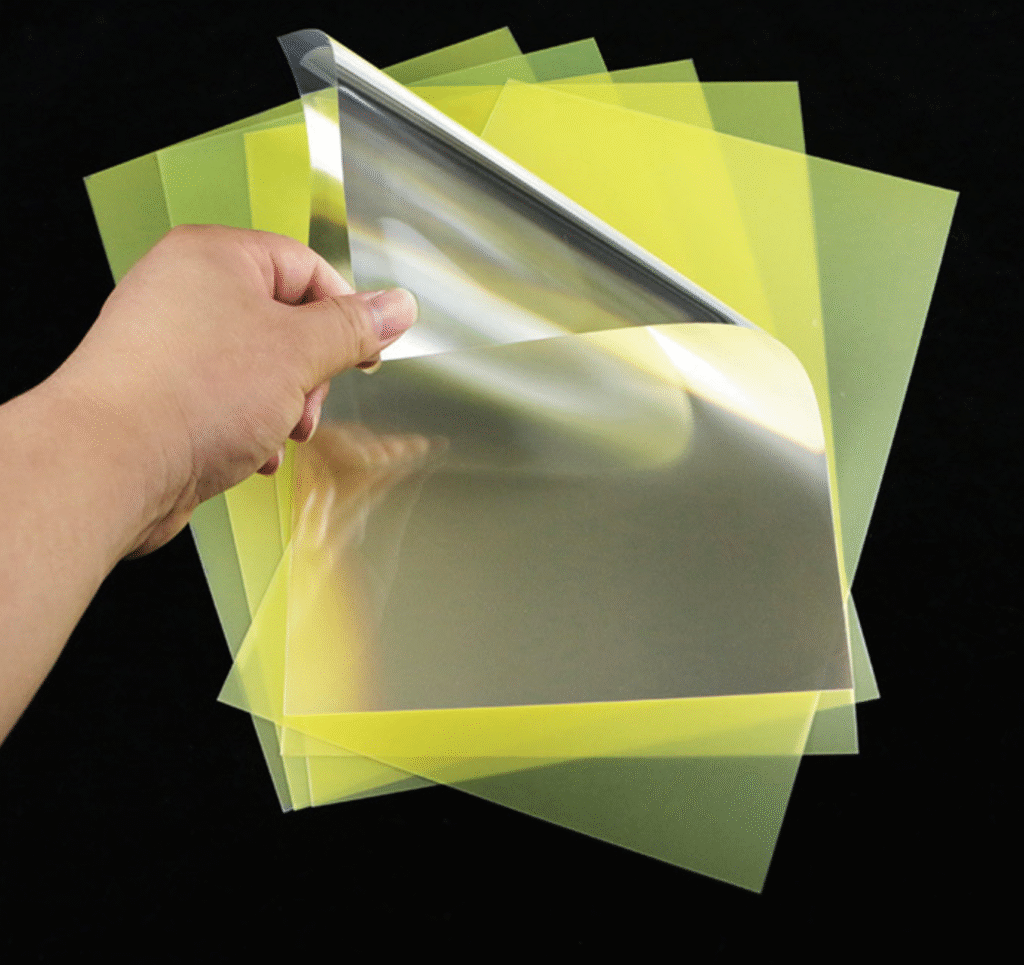Hoja de prisma is an optical film with a uniform prism pattern precision-formed on the surface of highly transparent PET using acrylic resin. Brightening film is also known as prism film.
Prism sheet is a well-known brightening film that utilizes a structure similar to a triangular prism, causing light rays with different incident angles to refract at different angles, thereby increasing the brightness of the screen’s front surface. Prism films are optical films manufactured using 3M micro-replication technology, where prism structures made from acrylic resin are fabricated onto a PET substrate. The surface features micro-prism structures with a height of approximately 20–50 microns.
Based on geometric optical principles, light emitted from the backlight passes through the prism film and the backlight system in a cyclical process, ultimately converging and emitting in the forward direction, thereby achieving a brightness-enhancing effect.
I.doharacteristics of Prism sheets

1. Currently, the most widely used prism films on the market are primarily single-sided structures.
2. Most brand materials are rolled in a 180-degree pattern, with only a few rolled in a 90-degree pattern.
3. Both sides of the raw material are covered with protective film, one side thicker than the other. (Due to variations among brands and models, please refer to the material properties table to confirm the prism side and PET side.)
Note: Since some brands apply a matte finish to the PET side, it is not recommended to distinguish between the prism side and the PET side by touch.
II.Applications of Hoja de prisma
Laptop computers, LCD monitors, LCD televisions, portable DVD players, in-car navigation systems, touchscreen smartphones, digital cameras, and digital video equipment, etc.
When assembled in front of the backlight, it focuses the light emitted by the light source toward the user of the display device, increasing the front brightness by approximately 100% (when two sheets are used orthogonally, with horizontal and vertical BEF). Additionally, unused light outside the viewing angle is recycled through the re-reflection effect of light and focused toward the user at the most appropriate angle.
III.Principle of the light-gathering film=
This technology utilizes micro-prism technology (based on the principle of light refraction) to converge light beams from all angles into a narrow-angle beam. By reducing the brightness of side angles, the brightness of the central angle is enhanced. A single light-gathering film can increase brightness by approximately 60% when it converges light beams perpendicular to the prism (stripes). When two films with perpendicular stripe angles are used together, they can converge light beams from all angles, achieving a brightness increase of approximately 120%.
Features
1. Concentrates the dispersed light emitted by the light source toward the front direction to enhance brightness.
2. When two sheets are used orthogonally, the front brightness can be increased by approximately 100%.
3. The thickness is only 65–220 μm, having minimal impact on the thickness of display devices.
 Soluciones de fondo de fondo personalizadas & Proveedor de hojas ópticas – Rnoda Tech
Soluciones de fondo de fondo personalizadas & Proveedor de hojas ópticas – Rnoda Tech

